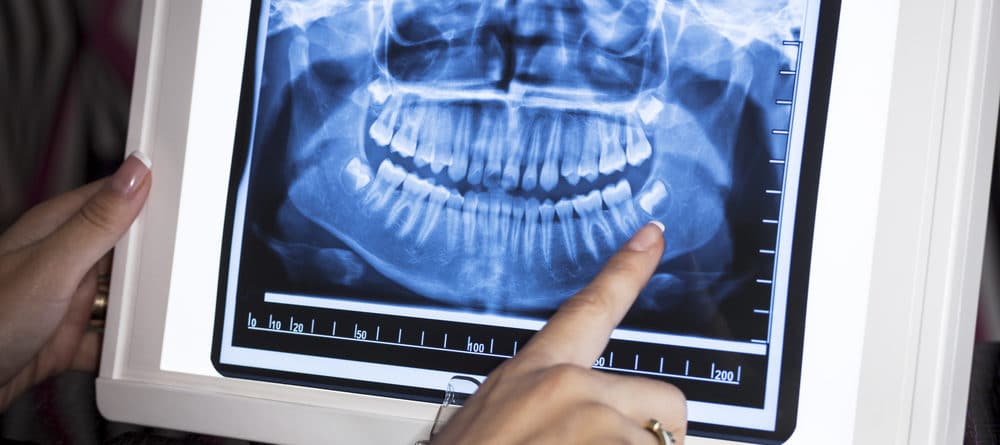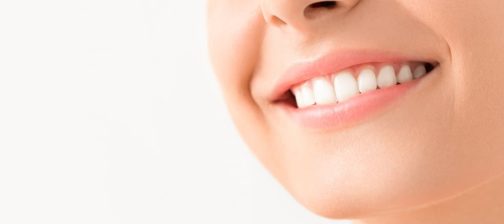Creating The Picture
When you have an X-Ray, radiation in the form of a beam passes through the soft tissues of your body and becomes absorbed by heavier atoms like your bone. As it passes through, it hits a sheet of metallic film that is set up behind the patient or small electronic sensor that is placed in the mouth. When the beam hits the bone or heavier atoms, less radiation passes through making the areas appear lighter. Since bones are rich in calcium that are a heavier atom, the X-Rays are absorbed and appear white on the image. But when the beams pass through soft-tissue or areas of tooth decay, infection, abscesses and cysts, they look darker because they don’t absorb as much as the X-ray.Protecting Against Radiation
Did you know that different X-Rays deliver different types of radiation? For instance, the X-Ray machine found at the dentist emits low levels of radiation compared to other forms, like those used in CT scans. And because X-Rays use radiation, there has been concern over the health implications of them. It is believed that X-Rays can cause mutations in our DNA if exposed to high levels for a period of time. However, the risks to patients who are only exposed to minimal radiation are low compared to the benefits of medical imaging. So you shouldn’t worry when you visit the dentist, as they take all the necessary precautions to keep you safe.Benefits of X-Rays
X-Rays provide several benefits to patients that traditional methods can’t achieve. For one, they are a non-invasive procedure that saves time on problem-solving. Without the need to physically enter a patient, an X-ray can be used to diagnose a medical issue or examine an area before performing procedures like implants and braces. They are also used to help guide the dentist when performing difficult procedures so they can get to the right spot. And X-Rays work to pinpoint infections in the bone or at the root, spot decay that may be lurking between the teeth or under a filling, and find advanced bone loss. Dental X-Rays provide valuable information about the condition and health of your teeth. A dentist can find problems that can not be seen with the naked eye, ensuring you get the proper care for a beautiful, healthy smile. So never fear a dental X-Ray - it’s a safe procedure that helps guide dentists to providing you with the best oral care possible.How Do XRays Work? A Simple Guide to Dental Imaging
Ever wonder how X-rays work at the dentist’s office? X-ray machines play a crucial role in modern dental care by allowing dentists to see beneath the surface of your teeth and gums. Whether it’s detecting cavities, checking bone health, or planning for braces or implants, dental X-rays provide a clear picture that the naked eye can’t see. But how do dental Xrays work, exactly? Let’s break it down.
What Are Dental X-Rays?
Dental X-rays are a type of diagnostic imaging that uses controlled, low-dose radiation to create detailed pictures of your mouth. These images help your dentist assess your oral health, diagnose hidden problems, and create personalized treatment plans.
How Do XRays Work to Create a Dental Image?
When you undergo a dental X-ray, a focused beam of radiation is directed toward the targeted area of your mouth. Here’s a step-by-step look at how X-rays work to capture internal images:
-
X-ray beams pass through your body — Soft tissues like gums and cheeks let most of the radiation through.
-
Denser structures like bones and teeth absorb more radiation — Calcium-rich areas block the X-rays and appear white on the image.
-
Less dense areas (like decay, infections, or soft tissues) appear darker — This contrast helps your dentist detect problems that can’t be seen during a visual exam.
-
The image is captured on a digital sensor or film placed inside your mouth, allowing immediate review and diagnosis.
Are Dental X-Rays Safe?
Yes — dental X-rays use minimal radiation compared to other types of medical imaging like CT scans. Dentists also take safety precautions, such as using lead aprons and limiting exposure time.
While prolonged or repeated exposure to high doses of radiation could pose risks, the radiation levels in dental X-rays are extremely low, making them safe for both children and adults. The benefits of early detection and accurate diagnosis far outweigh the minimal risk.
Why Are Dental X-Rays Important?
Still wondering how do Xrays work to benefit your dental health? Here are some of their major advantages:
-
Detect hidden cavities between teeth or under fillings
-
Pinpoint infections at the root of the tooth or in the bone
-
Identify bone loss due to gum disease
-
Guide orthodontic treatments, implants, and surgeries
-
Monitor development in children and teens
Thanks to digital X-ray technology, these procedures are quicker, safer, and more comfortable than ever.
The Bottom Line: How Do XRays Work to Keep You Healthy?
Understanding how do Xrays work helps you feel more comfortable during your dental visits. They are a powerful, non-invasive tool that allows dentists to see beyond the surface—leading to earlier diagnosis, faster treatment, and better oral health.
At The Teal Umbrella, we use advanced digital X-rays to ensure precise, safe, and efficient dental care for all our patients.
Have questions or need to book your dental exam?
📞 Call us at 613-216-9296 or contact us online.




